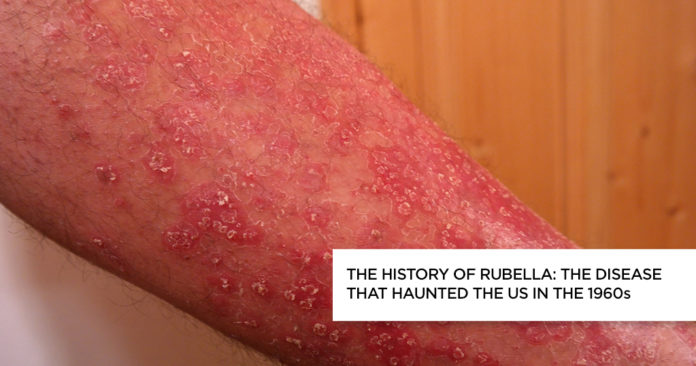Rubella, also known as ‘Three-day Measles or German Measles’ is a contagious viral infection; a distinct red rash characterises it. In most people, Rubella can result in mild symptoms or also no symptoms whatsoever. However, this infection can have serious issues for babies inside an infected mother’s womb.
What is Rubella?
Rubella is contagious and is a disease that majorly impacts children. Red rash, redness in the eyes, and fever are usually the common symptoms of Rubella. Although this infection is mild in children, it can become serious in the case of pregnant women. Rubella is caused due to various reasons and is air-borne. The virus spreads through sneeze/ cough droplets from infected people. Some people might be having the disease and are asymptomatic, and this causes the disease to spread unknowingly.
Although Rubella is different from Measles, both have common symptoms such as the red-coloured rash. Both Rubella and Measles are caused by different viruses and Rubella is not as contagious or as severe as Measles.
To prevent Rubella, the vaccine to prevent MMR (measles-mumps-rubella) is widely used in India. Despite the fact that Rubella is either non-existent or rare in several countries, the vaccination is still given as the virus can have serious repercussions for unborn babies whose mothers have been infected with Rubella.
Symptoms of Rubella
The symptoms and signs of Rubella are not quite obvious, particularly in the case of children. They usually start surfacing after 1-2 weeks and last anything between 1-5 days. Here are the symptoms and signs that can indicate Rubella:
● Headache
● Runny or blocked nose
● Slight fever which could be 102 F (38.9 C) or below
● Redness or inflammation in the eyes
● Tender and enlarged lymph nodes behind the ears, at the back of the neck, or at the base of the skull
● Joint aches, particularly in young females
● A pink rash that initially starts on the face and swiftly spreads to the trunk, arms, and legs. It then disappears in a similar order
Complication and Risk factors Related to Rubella
Rubella, up until the 1960s, was regarded as a common childhood disease. However, the vaccine for MMR prevented its spread in the US in 2004. Anyone who does not have the vaccine is susceptible to contracting Rubella, and pregnant women face risks to the unborn baby if they contract rubella . Here are some of the complications caused by Rubella:
Pregnant women who have been exposed to Rubella can cause fatal consequences for their unborn child. Nearly 80% of babies born in such cases can develop congenital Rubella
syndrome during the first 12 weeks of pregnancy which includes problems such as deafness, cataract, growth impairment, organ defects, congenital heart defects, and intellectual disability.
Treatment of Rubella
There is no treatment that can potentially reduce the progression of Rubella. Symptoms of this infection are usually mild and do not require treatment. However, it is recommended by doctors that infected people should self-isolate themselves during the duration to prevent the spread.
However, a pregnant woman who has been infected with Rubella should discuss the risks attached to the baby with the doctor. In case she wants to continue the pregnancy, then a dose of hyper-immune globulin (antibodies) will be administered to help fight the infection. This treatment reduces the likelihood of your unborn child contracting congenital Rubella syndrome, but it does not eliminate the risk altogether.
If an adult or child is infected, then there are simple home/ lifestyle remedies that can help, which include:
● Taking paracetamol for respite from aches and fever
● Bed rest
Precautions of Rubella:
The MMR vaccine is recommended by doctors to be given to children initially between the ages 12-15 months, followed by a booster shot between 4-6 years of age, especially before they start school. It is vital for girls to be immunised with the MMR vaccine to prevent Rubella infection during their pregnancies in the future.
Frequently Asked Question (FAQs)
- Can Rubella be cured?
There is no medication for curing Rubella or shortening its span. In most cases, the symptoms of the infection are mild and can be easily managed by taking fever-related medication and bed rest.
- What organs does Rubella affect?
This infection mostly impacts the lymph nodes and causes a skin rash, fever and cold like symptoms.


















